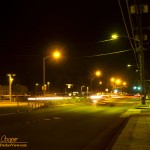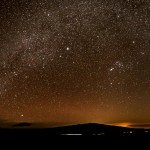Light pollution, a subject near and dear to any sky-gazers heart. It seems we are always struggling to educate our fellow citizens that more is not better, it can be far worse, particularly when it comes to the subject of artificial light. We are at odds with the child inside all of us that delights in the creation of light, a magic that never seems to lose its charm.

Artificial light harms many species that live near our cities and towns, birds, sea-turtles, and more lured to their doom by the lights. The light also harm us, disturbing circadian rhythms and other natural cycles necessary for good health.
Light pollution also obscures the stars, drowning out the universe that would otherwise shine brightly overhead. Besides being a subject we should all care about, the night skies have a real economic impact here in Hawaii, a state largely dependent on a healthy environment and the tourists that come to enjoy that environment.
The legislature finds that dark night skies hold important cultural, scientific, astronomical, natural, landscape, and tourism related value. Light pollution caused by the excessive, misdirected, or obtrusive use of artificial light has become a worldwide problem, and is now posing significant challenges for the State. The inappropriate use of lighting at night includes over-illumination, with excessive use of artificial light, use of fixtures that direct light upwards causing glare and sky glow, and use of fixtures that have excessive amounts of blue light. – Section 1 of SB1025, Hawaii Legislature 2018

Several counties do have light pollution ordinances in force, notably Hawaii county where the ordinance was put in place to protect the observatories. While astronomy may be the driving factor, the whole island benefits, a benefit that should be state-wide.
These bills were introduced in 2017, but not passed, simply carried over into the current legislative session. Personally I would like to see this become law, a first step to dealing with light pollution on a state level.

